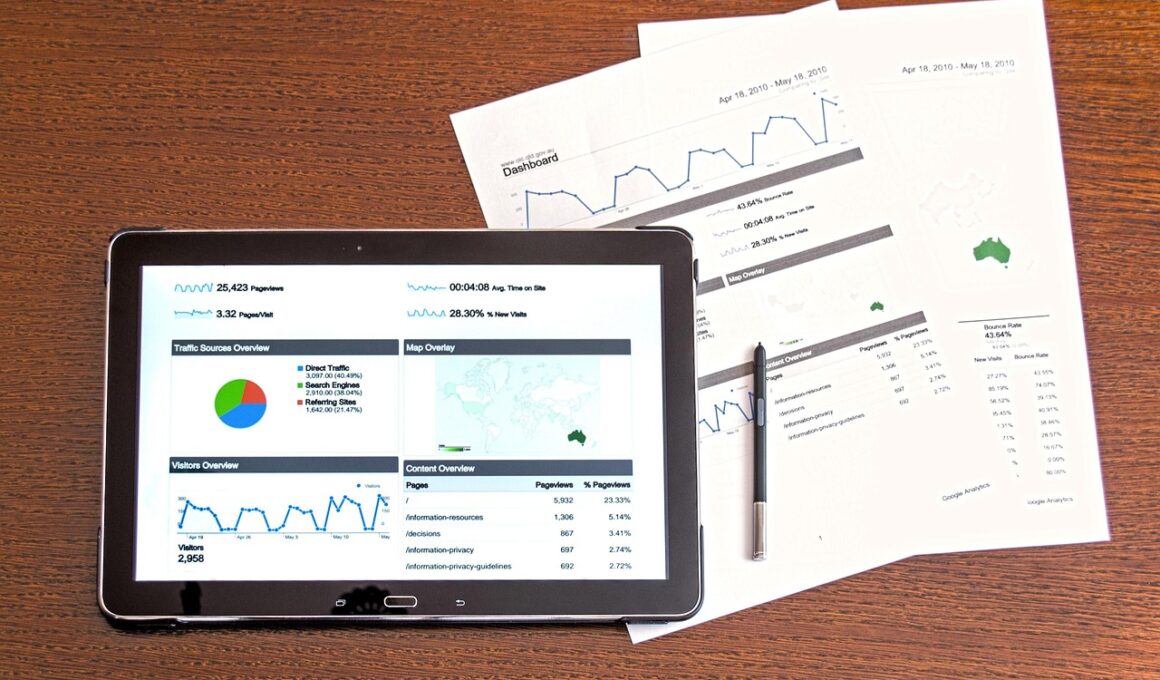How Social Media Analytics Tools Help in Crisis Management
Social media has increasingly become a powerful tool for communication and information dissemination. In today’s fast-paced world, organizations face various crises, ranging from scandals to operational failures. Social media analytics tools assist in navigating these turbulent waters by offering insights into public sentiment and feedback. By tracking brand mentions, hashtags, and key phrases, companies can quickly identify potential crises before they escalate. For instance, if a product issue arises, analytics tools can help gauge customer reactions in real-time. This immediate feedback allows businesses to react promptly and appropriately. Furthermore, these tools can categorize data based on various parameters such as sentiment, location, and demographics. This categorization helps organizations tailor their messaging and responses, ensuring clarity and relevance. Moreover, social media analytics not only track present sentiments but can reveal trends over time. Businesses can then proactively address concerns before they become major issues. In this ever-evolving digital landscape, organizations equipped with the right analytics tools can turn potential crises into opportunities for growth and improvement, thus maintaining and enhancing their reputation.
Social media analytics tools provide businesses with a plethora of data regarding audience engagement. Each platform, whether Facebook, Twitter, or Instagram, holds specific audience information relevant to companies. By leveraging these analytics tools, organizations can gather insights about their audience’s demographics, preferences, and behaviors. This vital information informs crisis management strategies, enabling companies to focus their messaging effectively. For example, suppose a tech company faces negative backlash following a software glitch. In that case, the analytics tools can discern the primary concerns expressed by customers, allowing the firm to issue a target-focused response. An informed plan developed from careful analysis can resonate more with an audience. Not only does this approach mitigate potential engagement fallout, but it also shows the public that the company is listening. Companies can also choose to identify influencers or brand advocates during a crisis. These individuals can effectively carry the message of resolution to a broader audience, thus promoting reconciliation with affected customers. In essence, the understanding gained from analytics tools is invaluable when managing crises, providing actionable intelligence to improve response strategies.
Effective communication is crucial when managing a crisis. Social media analytics tools provide organizations greater insight into audience responses, enabling better messaging strategies. Businesses can detect dominant sentiments following a crisis through analytics, allowing tailored messages that address customer queries directly. For instance, if a particular issue receives predominantly negative feedback, an organization can focus on transparency and accountability in its communications. This approach is vital since the public is more inclined to support organizations that acknowledge their mistakes. Additionally, these tools help businesses monitor how messages are received and adjusted accordingly. Continuously analyzing feedback allows companies to gauge public perception and ensure messaging is well-received. In a crisis, every second counts, and social media analytics tools act as a safety net, providing relevant data in real-time. Moreover, analyzing the timing and frequency of social media posts can significantly impact audience engagement. Analytics tools enable companies to discern when their audience is most active, guiding optimal posting times that maximize visibility. This strategic use of timing complements crisis management efforts, ensuring clarity and consistency in communications during turbulent periods.
Responding to Negative Sentiment
One significant advantage of social media analytics tools is their ability to gauge negative sentiment early. These tools use sentiment analysis to categorize public perception of a brand or issue, allowing businesses to understand where they stand in the eyes of their audience. By addressing negative sentiment swiftly, companies can mitigate potential backlash stemming from public opinions. For example, if complaints flood in regarding a product, social media analytics will help quantify the degree of concern. Armed with this data, organizations can formulate a strategy to address the grievances effectively. Moreover, responsive communication is a key factor in establishing trust with the audience. Customers appreciate transparency and communication from brands, especially when issues arise. Analytics tools allow companies to keep track of responses to their outreach, shining a light on what approaches resonate most effectively. Additionally, businesses can utilize this feedback to improve their products or services based on customer experiences. This cycle of feedback and response builds stronger relationships with audiences, ultimately fortifying the organization’s reputation even amid crises. The ability to pivot based on real-time data is crucial for effective crisis management.
Choosing the right crisis communication channels is another aspect greatly enhanced by social media analytics. These tools can quantify engagement levels across different platforms, demonstrating which channels yield the highest response rates. By analyzing historical data, organizations can discern where audiences are most active, tailoring their crisis response channels accordingly. For example, if Twitter is the platform garnering the most engagement during a crisis, it would make sense to prioritize communications through this medium. This strategy ensures messaging reaches the intended audience promptly, minimizing confusion during a crisis. Furthermore, analytics tools track the engagement on the frequency of posts. Companies can adjust their posting frequency to match audience preferences, ensuring maximum visibility and interaction. If particular messages resonate well, analytics can help guide converging content strategies while addressing ongoing concerns. By maintaining active presence on preferred platforms, brands can foster ongoing dialogues with consumers. Strategic use of diverse channels emphasizes the organization’s commitment to transparency. The emphasis on tailoring communication approaches based on data analytics creates a cohesive response strategy that aligns with audience expectations during stressful events.
Analytics tools also play a pivotal role in post-crisis evaluation. After the dust settles, organizations need to assess how they handled the situation. By reviewing analytics data, companies can analyze their messaging effectiveness, audience engagement, and sentiment shifts during the crisis. This retrospective analysis influences future strategies, cultivating organizational learning. Lessons learned during an initial crisis phase can refine responses for future incidents. For instance, if an organization found that certain messages failed to resonate, they could adjust their strategies accordingly for subsequent crises. Identifying which platforms yielded better engagement also highlights where to allocate resources in future situations. It’s equally important to recognize successful communication strategies that worked well for rebuilding trust. Analytics tools provide a baselining opportunity to compare future crises against past performances, allowing optimal responses to be crafted. Continuous monitoring of audience sentiment post-crisis can also reveal ongoing issues that need addressing. This proactive approach fosters a culture of accountability and improvement. Ultimately, the data-driven insights garnered through analytics tools become a guiding compass for organizations navigating future crises, enhancing resilience, and preparedness.
Integration of social media analytics into broader crisis management strategies is becoming essential. By embedding these tools into organizational protocols, companies can streamline their approaches to crisis situations. Collaboration between departments, from marketing to customer service, enhances the overall response strategy. Data shared from analytics can unify messaging, reducing mixed signals to the audience. Establishing clear communication channels within the organization creates a solid response framework. Cohesive strategies supported by analytics ensure all team members are on the same page during crises. Furthermore, training team members on utilizing these analytics tools is essential for maximizing their potential. Familiarity with analytics empowers employees to react swiftly to public sentiment changes without delays. Encouraging adaptability ensures that organizations can pivot when necessary, thus enhancing their responsiveness. As the digital landscape evolves, the integration of social media analytics tools will define organizations ready for unforeseen circumstances. With a robust strategy, businesses can ultimately transform challenges into opportunities for growth. Embracing these tools represents a commitment to proactive management of public relationships, fostering trust, and reputation enhancement during turbulent times.


